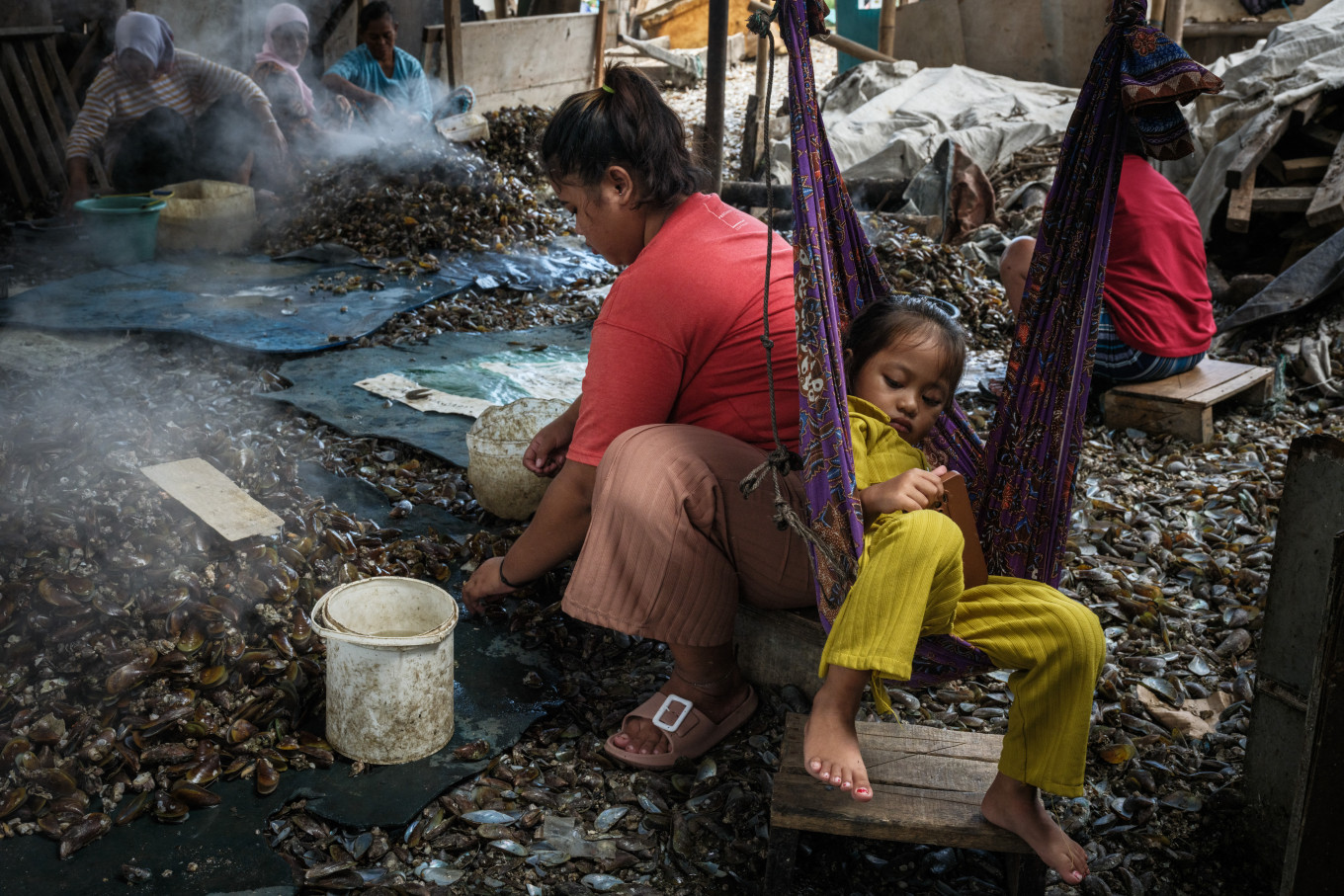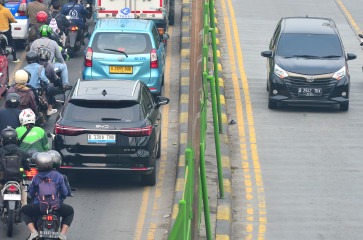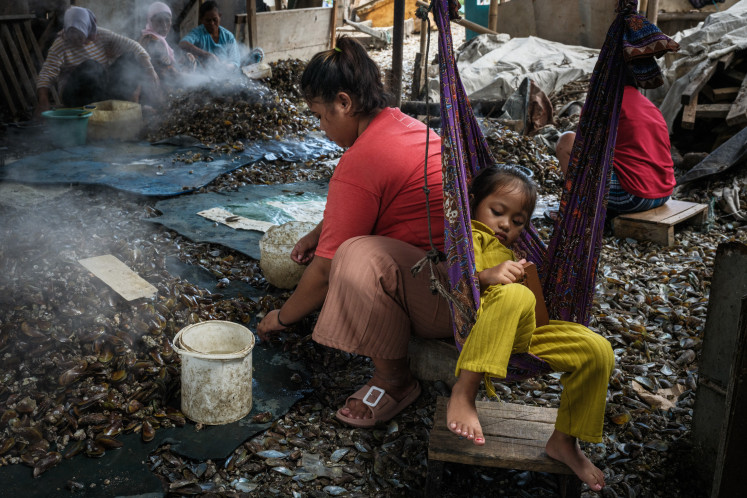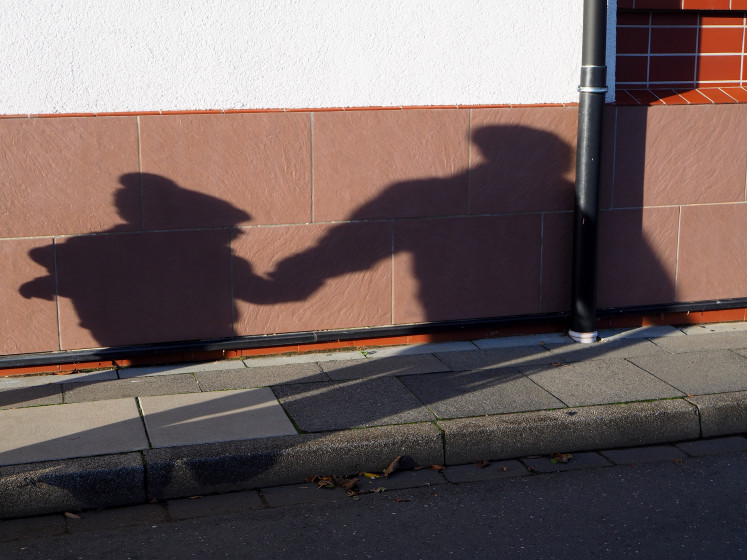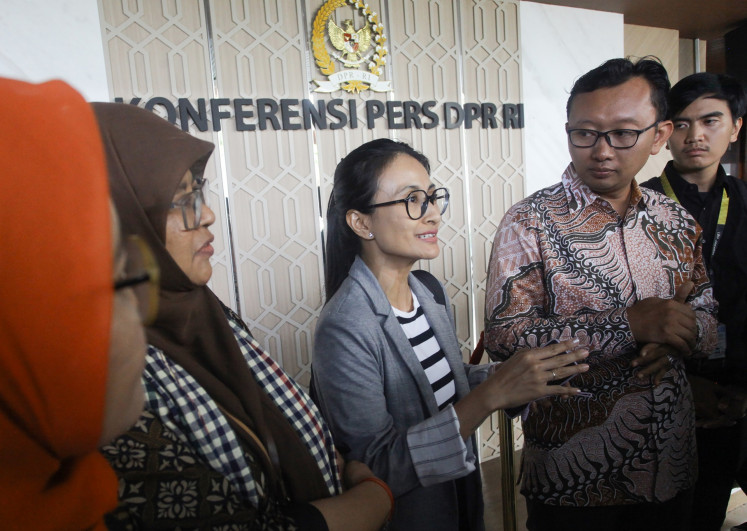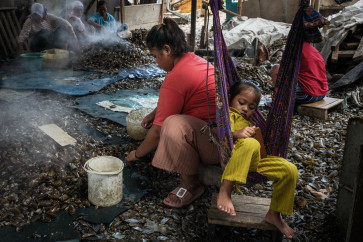Popular Reads
Top Results
Can't find what you're looking for?
View all search resultsPopular Reads
Top Results
Can't find what you're looking for?
View all search resultsShell piles engulf North Jakarta’s eroding coast
Just as the climate crisis slowly pushes shorelines inland, a towering pile of green mussel shells now buries the already shrinking coastline in Cilincing, North Jakarta.
Change text size
Gift Premium Articles
to Anyone
I
nside a small tent facing Jakarta Bay in Cilincing, North Jakarta, Muhammad Fajar Alamsyah sits quietly, extracting mussels from their shells, a dead-end job he has been doing for more than a decade.
In North Jakarta fishing neighborhoods, where fisherfolk can harvest between 1 and 4 tonnes of green mussels every day, people who do not sail like Fajar make their ends meet by shelling mussels, collecting 20 kilograms of edible flesh on a good day. They are typically paid Rp 3,000 (18 US cents) for every kilogram of edible flesh.
Green mussels are mostly sold to nearby markets to supply seafood eateries.
Meanwhile, the inedible parts of the mussel, including the shell that accounts for up to 90 percent of the mollusk's body, get thrown away.
"We always throw them in the sea because there's no other alternative. As the time goes by, the waste has piled up like this," Fajar told The Jakarta Post on Tuesday.
The piles of discarded shells now stand taller than concrete barriers built to hold sea water from creeping closer to the nearby coastal villages along the North Jakarta coastline amid climate crisis-induced sea level rise.
“We can’t recognize the beach anymore,” Fajar said.

